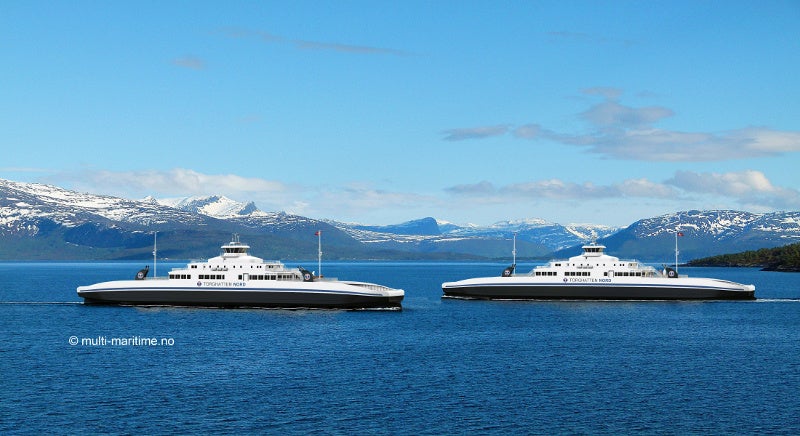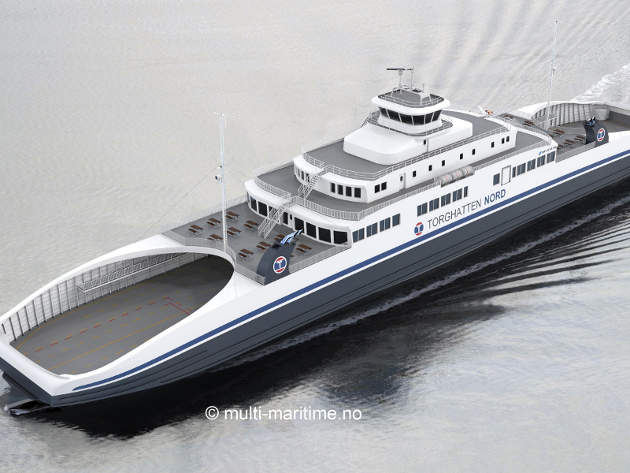
Norwegian ferry owner and operator Torghatten Nord selected Multi Maritime’s MM125FD LNG design for two LNG-powered car and passenger ferries to be built by Vard Holdings.
Vard Holdings received a contract worth approximately $70m (Nkr600m) for the construction of two LNG-powered car and passenger ferries for Torghatten Nord in January 2017. The hulls will be built by the Vard Braila shipyard in Romania, and the ferries will be outfitted at the Vard Brekvik shipyard in Norway. Deliveries are scheduled for late 2018.
The ferries will be deployed on the Halhjem-Sandvikvåg route by Torghatten under a five-year contract signed with the Norwegian Government. The contract also includes options to extend the services by up to three years.
MM125FD LNG ferry design and features
The MM125FD LNG ferry will incorporate a mono-hull design with a slender structure. The energy-efficient hull combined with on-board systems will ensure high manoeuvrability and good sea-keeping capabilities. The vessels will be built to meet future requirements for energy-efficient and low-emission transportation.
The ferries will be assigned DnV 1A1, CAR FERRY B, Gas Fuelled, Battery (Safety), E0, and R3 (NOR) class notations.
Each ferry will have an overall length of 129.9m, a moulded breadth of 20.7m, a moulded depth of 7.35m and a summer draft of 4.75m. The gross tonnage of the vessels will be approximately 6,850t.
Cargo and passenger accommodation
“The LNG-powered vessels will also feature a cafeteria, a lounge offering 360° views, and a passenger deck fitted with ergonomic windows.”
The ferries will be equipped with a spacious main deck with a large storage area to accommodate up to 180 cars. The vessels can carry up to 550 passengers.
The LNG-powered vessels will also feature a cafeteria, a lounge offering 360° views, and a passenger deck fitted with ergonomic windows. Interiors will be designed to reduce noise levels and vibration onboard.
Propulsion
The ferries will be equipped with a gas electric hybrid propulsion system, which will be powered by batteries to reduce fuel consumption and emissions from gas engines. The system will enable rapid plug-in charging from shore-based power distribution systems, and provide a speed of approximately 18kt.
Norwegian ferry services emit approximately 400,000t of CO2 a year, which is equivalent to approximately 1% of Norway’s total CO2 emissions. The hybrid gas-propelled ferries will reduce fuel costs, maintenance and emissions, while ensuring safe and eco-friendly operations.







